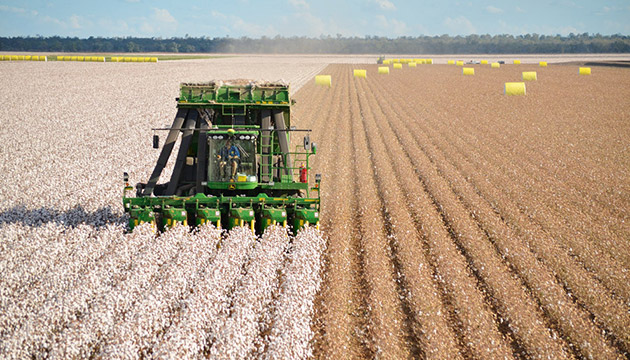Four generations of the Crothers family have weathered a continuous cycle of drought and flood to keep Booligar station going.
Story By Kerryn Suttor
Day breaks and the morning light washes a breathtaking golden hue over the paddocks, softening the landscape. It’s a dry year on Booligar Station. The land is parched and suffering the effects of harsh summers with little to no rain, and the grass that remains is crisp underfoot. The Crothers brothers, Donald and Douglas, have met at the machinery shed to discuss the day’s work. Donald’s son, Tom, who also works on the property, wanders over from the old family homestead to join them.
This family has Booligar blood running through its veins. Proud custodians of the historic station located 45 kilometres south-west of Dirranbandi, Qld, the Crothers family continues to run the family enterprise that began in 1864. “We are very sentimental about Booligar,” Donald says. “It is our home, it’s in our blood and there is a lot of water under the bridge, that’s for sure.” When it rains and the river catchment fills, this landscape is transformed and becomes a hive of activity. Fertile black soil produces fat cattle and bumper cotton crops.
Donald and Douglas run the property with their wives Pam and Lorraine and are the fourth generation of Crothers to do so. Douglas and Lorraine’s daughters, Lauren and Andrea, return home on university holidays to manage their own sheep enterprise. Their other daughter Caitlin, and Donald and Pam’s daughter Rossina, have both left home pursuing teaching careers.
Today the station is made up of three parcels totalling 10,900 hectares of cropping and grazing land, including the original tendered block. Sheep and cattle were the mainstay of early operations at Booligar, however, modern-day production includes cattle, cropping and fodder and, more recently, irrigated cotton. The property is located on a floodplain with predominately black soil interspersed with gentle undulating sandy ridges. From the air the land looks like a series of serpentine rivers when in flood.
“When the river runs it starts as a finger of water, not a wall of water as some people might think,” Pam says. “The trickle dips over the sticks, relentless, comes around the corner at the bend in the river where previously you might have walked. You hear the water move over the dry leaves and slowly the river fills; it really is something to witness.”
This Story is from Issue #99
Outback Magazine: Feb/Mar 2015










